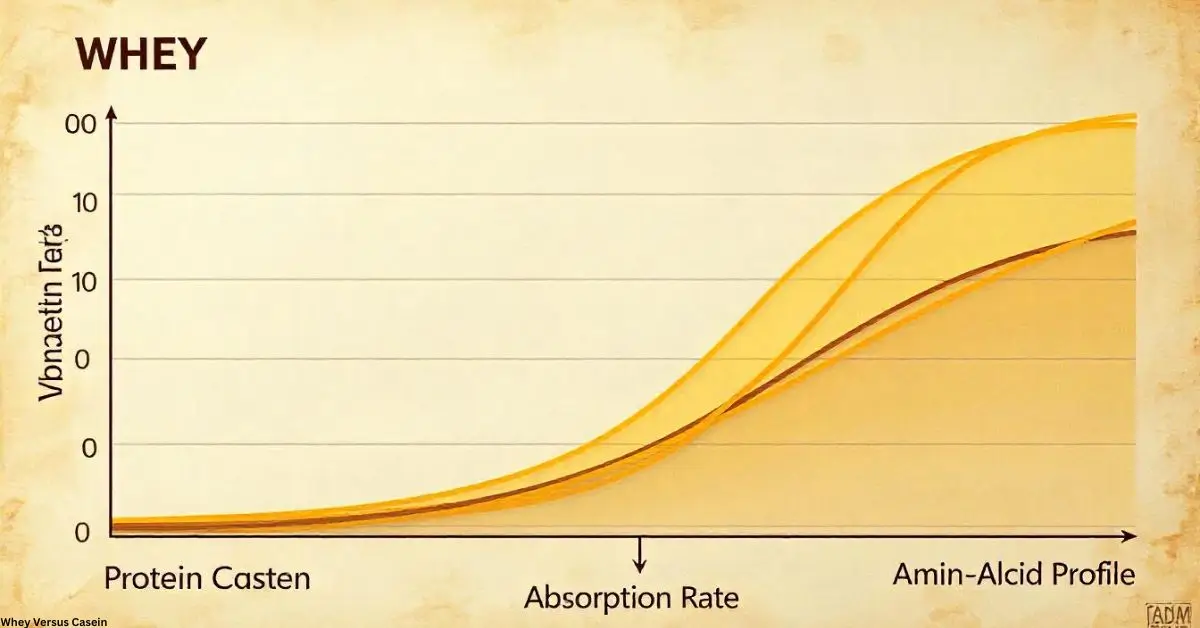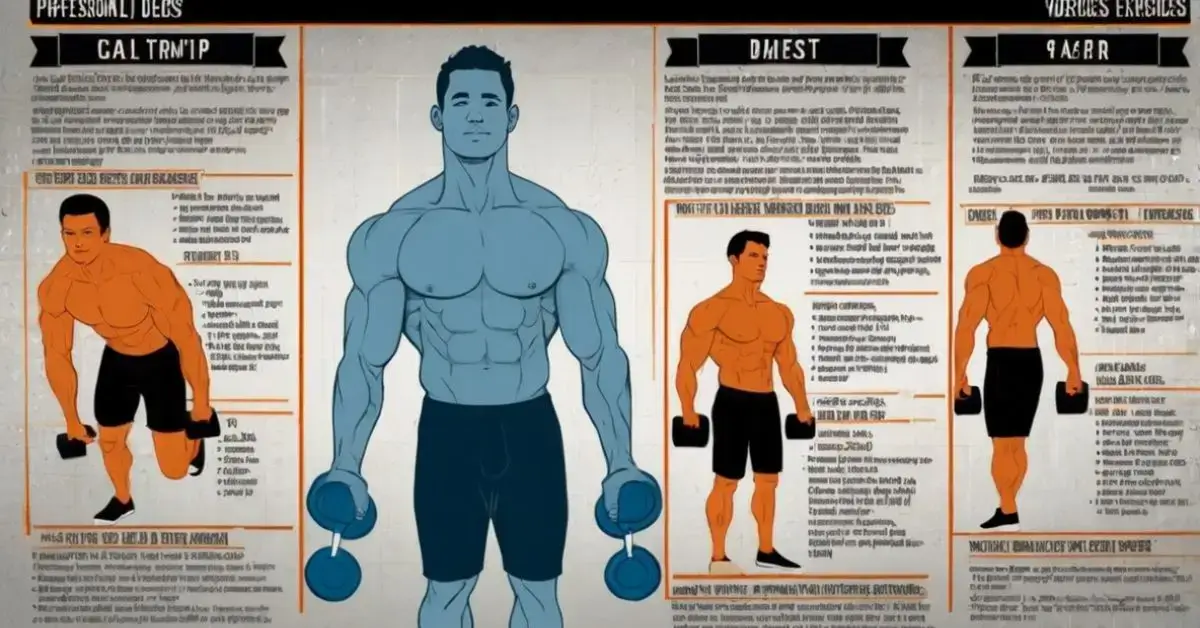WORKOUTS
Whey Versus Casein: Choosing the Right Protein for Workout

When it comes to maximizing workout results and achieving fitness goals, the debate between whey versus casein has become central to any serious athlete’s or gym-goer’s nutrition plan. These two high-quality proteins, both derived from milk, offer distinct benefits that can influence muscle growth, recovery, and performance based on how and when they’re consumed. In this comprehensive guide, we’ll explore the science, timing, and functional differences between whey versus casein to help you make an informed choice tailored to your fitness journey.
Understanding Protein’s Role in Fitness
Before diving deep into the whey versus casein comparison, it’s crucial to grasp why protein is a foundational nutrient for workout enthusiasts. Protein repairs and builds muscle fibers damaged during exercise, supports immune function, and aids in hormone production.
As per sports nutrition standards, active individuals need approximately 1.6 to 2.2 grams of protein per kilogram of body weight per day. The source and timing of that protein intake, however, significantly impact its effectiveness.
What Is Whey Protein?
Whey protein is the liquid by-product separated from milk during cheese production. It is a fast-digesting protein, typically absorbed within 30–60 minutes after ingestion. This quick absorption rate makes whey ideal for post-workout nutrition when the body is primed to absorb nutrients rapidly to repair muscle tissue.
There are three primary forms:
- Whey Concentrate (contains fats and carbs)
- Whey Isolate (higher in protein, lower in lactose)
- Whey Hydrolysate (pre-digested for even faster absorption)
“Whey protein is unmatched for muscle protein synthesis post-exercise,” says Dr. Nancy Rodriguez, a registered dietitian and professor of nutritional sciences.
What Is Casein Protein?
Unlike whey, casein digests slowly, taking about 6 to 8 hours to be fully absorbed. It forms a gel-like substance in the stomach, releasing amino acids gradually into the bloodstream. This slow-release property makes casein optimal for sustained nourishment, especially before bedtime to promote overnight muscle recovery.
Casein types include:
- Micellar Casein (slowest digesting form)
- Calcium Caseinate (a bit faster due to processing)
“Casein is ideal for periods of fasting or sleep,” notes sports nutritionist Alan Aragon. “It keeps amino acid levels elevated, reducing muscle breakdown.”
Whey Versus Casein: Key Differences
Below is a comparative table that outlines the core distinctions between whey versus casein in terms of workout and fitness efficiency:
| Feature | Whey Protein | Casein Protein |
| Absorption Rate | Rapid (30–60 minutes) | Slow (6–8 hours) |
| Ideal Timing | Post-workout | Pre-sleep or between meals |
| Muscle Support | Stimulates rapid growth | Prevents muscle breakdown |
| Satiety | Moderate | High (due to slow digestion) |
| Lactose Content | Lower (especially isolate) | Slightly higher |
| Cost | Slightly less expensive | Slightly more expensive |
| Ease of Use | Easy to mix, light texture | Thicker, can clump |
Muscle Growth: Whey Versus Casein in Action
For muscle hypertrophy, the quick spike of amino acids from whey is crucial. It initiates a powerful muscle protein synthesis (MPS) response post-exercise. However, research also shows that combining both whey and casein may yield optimal results by covering both immediate and prolonged recovery phases.
Studies published in the Journal of Strength and Conditioning Research confirm that consuming 20–30 grams of whey immediately after strength training can significantly enhance muscle size and strength over time. On the other hand, casein taken before bed has been shown to promote overnight MPS and reduce catabolism.
Weight Management and Satiety
While both whey and casein support fat loss through muscle preservation and thermogenesis, casein has superior appetite-suppressing abilities. Its slow digestion keeps you full longer, making it a preferred option during calorie deficits.
Whey, due to its fast absorption, doesn’t sustain satiety as long but can still aid weight loss through improved muscle recovery and energy expenditure post-training.
Timing Strategies for Workout Efficiency
Choosing whey versus casein depends heavily on timing:
- Before Workout: A small portion of whey ensures amino acids are available during training.
- After Workout: Whey protein isolate is optimal for fast recovery.
- Before Bed: Micellar casein supports overnight recovery and prevents muscle degradation.
- Between Meals: Either protein can be used, but casein offers prolonged satiety.
For best results, many athletes combine both at strategic points throughout the day.
Taste and Mixability
When considering taste and ease of mixing, whey generally wins. It blends smoothly into shakes and has a lighter texture. Casein, however, tends to be thicker and chalkier, sometimes forming clumps if not mixed well. That said, many supplement brands offer delicious casein formulations nowadays with improved mixability.
Athletic Goals and Individual Needs
- Bodybuilders: Prefer whey post-workout and casein before bed.
- Endurance Athletes: May benefit from casein to protect muscles over long training sessions.
- Weight Lifters: Often cycle between both based on training volume and diet phase.
Personal goals, lactose sensitivity, dietary habits, and budget also influence whether whey versus casein is more suitable.
Scientific Backing and Industry Endorsement
According to the International Society of Sports Nutrition, both whey and casein have strong evidence supporting their roles in enhancing strength and lean mass when combined with resistance training. Their report emphasizes that timing, dosage, and individual variability should guide protein selection.
Moreover, leading fitness experts recommend:
“Use whey to kickstart recovery, and casein to maintain it through the night,”
— Brad Schoenfeld, Ph.D., exercise science researcher
Popular Forms and Supplement Tips
When shopping for protein, consider:
- Whey Isolate if lactose-sensitive
- Micellar Casein for optimal nighttime protein
- Blended Formulas that combine both for convenience
Look for third-party certifications, minimal fillers, and flavor options that suit your taste preferences.
Summary: Which One Should You Choose?
So in the debate of whey versus casein, there’s no one-size-fits-all answer. Your training routine, recovery window, budget, and health goals will determine the better fit. For rapid post-workout recovery, whey is unmatched. For prolonged muscle support and satiety, casein is king.
Experts agree that combining both proteins at strategic times offers the most comprehensive support for muscle growth, fat loss, and sustained performance.
Conclusion
In the ever-evolving world of fitness nutrition, the comparison of whey versus casein is less about choosing one over the other and more about using both to your advantage. Each has its place in a well-rounded workout regimen. Whether you’re an athlete aiming for peak performance or a fitness enthusiast building lean muscle, understanding how and when to use these proteins can transform your results. With strategic timing and mindful selection, whey and casein can help you recover faster, train harder, and stay leaner.
FAQs
What is the best time to take whey protein?
Right after your workout is the best time to take whey protein due to its fast absorption and muscle-repairing properties.
Can I take casein protein after my workout?
While casein can be taken post-workout, it is more effective when consumed before sleep for sustained muscle recovery overnight.
Is it okay to mix whey and casein together?
Yes, combining whey and casein provides both immediate and prolonged muscle protein synthesis, enhancing overall muscle growth.
Which protein is better for fat loss, whey or casein?
Casein may be slightly better for fat loss due to its higher satiety, but both can help preserve muscle mass during a calorie deficit.
Are there any side effects of consuming whey or casein?
Most people tolerate both well, but those with lactose intolerance should opt for whey isolate or lactose-free casein.
How much protein do I need daily for muscle gain?
Generally, 1.6 to 2.2 grams of protein per kilogram of body weight per day is recommended for optimal muscle gain.
WORKOUTS
Suicides Workout: The Ultimate Drill for Explosive Endurance

The suicides workout is a powerful training technique designed to test your limits, improve cardiovascular endurance, and build mental toughness. Whether you’re an athlete, a fitness enthusiast, or someone looking to shed fat and get in shape, this high-intensity drill packs a punch. Its versatility, simplicity, and intensity make it a staple in sports training and boot camps.
What Is a Suicides Workout?
A suicides workout, also known as “suicide runs” or “line drills,” involves sprinting to a series of progressively distant points and returning to the starting line after each run. Originally used in sports like basketball and football, this drill is now embraced in a wide variety of training environments, from military boot camps to CrossFit sessions.
In its basic form:
- Begin at a baseline.
- Sprint to the first marker (e.g., 10 meters), touch the ground, and return.
- Continue to the next farthest point and repeat.
- Complete several intervals based on your training goal.
This shuttle-style movement targets aerobic and anaerobic energy systems, improving overall conditioning.
Benefits of a Suicides Workout
This drill offers much more than just cardio. Here’s why it stands out among fitness routines:
Improves Cardiovascular Endurance
The fast-paced nature increases your heart rate, conditioning your heart and lungs to work more efficiently during high-intensity efforts.
Accelerates Fat Burn
Short bursts of maximum effort followed by brief rests trigger the afterburn effect (EPOC), helping your body burn calories long after your session ends.
Boosts Agility and Speed
Regular practice sharpens your reflexes, footwork, and the ability to rapidly change direction—crucial for athletes in competitive sports.
Mental Resilience
Repeated intense sprints test your determination, forcing you to push past fatigue and stay focused under pressure.
Total-Body Engagement
This conditioning drill works your quads, hamstrings, calves, core, and even arms, especially if combined with other bodyweight exercises between sprints.
Comparison Table: Suicides Workout vs Conditioning Drills Overview
| Feature | Suicides Workout | Treadmill Sprint | Rowing Machine | Battle Ropes | Circuit Training |
| Cost | Free | High | High | Medium | Varies |
| Efficiency | Very High | Moderate | High | Medium | High |
| Ease of Use | Easy | Easy | Medium | Easy | Medium |
| Scalability | Excellent | Good | Good | Limited | Excellent |
| Benefits | Speed, Endurance, Fat Loss | Cardio, Fat Burn | Strength & Stamina | Arm Toning | Overall Fitness |
How to Perform Suicides Workout Correctly
Start With a Warm-Up
Don’t jump into sprints cold. Perform five minutes of light jogging followed by mobility drills like leg swings, high knees, and arm circles.
Step-by-Step Execution
- Mark lines at intervals—5, 10, 15, and 20 meters.
- Sprint to the first marker and back.
- Repeat for each increasing distance.
- Rest 30–60 seconds and complete 3–6 rounds depending on your fitness level.
Helpful Tips
- Pivot low to maintain balance and control.
- Use short, explosive strides.
- Drive your arms with each step.
- Stay relaxed while breathing steadily.
Workout Variations for Every Fitness Level
To keep things interesting, try modifying this high-speed drill in the following ways:
Lateral Runs
Instead of sprinting forward, move sideways to improve lateral agility and hip stability.
Add Burpees
After each touchpoint, do a burpee before running back. This increases heart rate and works the upper body.
Use Weights
Wear a weighted vest or hold light dumbbells to add resistance and build muscular endurance.
Incorporate Stairs
Find a staircase or stadium steps and use them for short explosive climbs and descents.
These variations provide different challenges, keeping the workout effective and engaging.
Ideal for Athletes and Everyday Fitness
This sprint-style drill is popular across various disciplines because of its many benefits:
- Sports players use it to simulate game conditions.
- Military personnel include it in boot camp-style training for full-body conditioning.
- Weight-loss seekers value its intensity and metabolic burn.
- Busy professionals appreciate its time efficiency.
- Fitness trainers recommend it for developing both aerobic and anaerobic capacity.
Beginners should start with caution and adjust the intensity to match their current level.
Avoid These Common Mistakes In Suicides Workout
Neglecting Warm-Ups
Jumping straight into sprints can cause strains. Always start with dynamic stretches and light cardio.
Bad Turning Mechanics
Improper pivoting leads to ankle and knee injuries. Focus on stable, controlled turns at each marker.
Training Too Frequently
Your body needs rest to recover and grow stronger. Limit to 2–3 sessions per week, especially in the beginning.
Hard Training Surfaces
Avoid concrete or asphalt. Choose grassy fields, padded gym floors, or synthetic turf to minimize joint stress.
Programming Suicides Workout into Your Weekly Routine
Here’s a simple plan for integrating this drill into your workout schedule:
| Day | Activity |
| Monday | Upper Body Strength |
| Tuesday | Shuttle Runs + Core Work |
| Wednesday | Yoga or Active Recovery |
| Thursday | Lower Body Strength |
| Friday | Interval Sprints + Bodyweight HIIT |
| Saturday | Light Cardio or Outdoor Activities |
| Sunday | Rest |
Adjust reps and sets based on your training goals.
Why Coaches Love Suicides Workout
Trainers and coaches from various sports disciplines swear by this conditioning drill for its ability to build stamina under pressure. Since it mimics real-game conditions—like chasing a ball, backtracking on defense, or rushing in a counterattack—it’s ideal for sport-specific fitness.
Athletes who regularly use this technique often notice improvements in match performance, energy levels, and concentration.
Safety Guidelines for Optimal Results
Stay Hydrated
Intense running drills cause significant fluid loss. Drink water before, during, and after the session.
Choose the Right Shoes
Use shoes with good arch support, shock absorption, and grip to prevent foot fatigue and slips.
Prioritize Recovery
Post-workout stretches, proper nutrition, and adequate sleep are essential for reducing soreness and maximizing results.
Suicides in Functional and Mental Conditioning
This style of interval training also strengthens your mind. Here’s how:
- Mental Grit: You learn to push through discomfort.
- Focus: Staying aware of technique and breathing under fatigue builds sharpness.
- Consistency: It encourages discipline, which translates into other life areas.
These elements contribute to improved overall well-being and mental toughness.
Adaptations for Special Needs or Beginners
This drill is scalable. Depending on your fitness level or physical condition, here’s how you can modify it:
- Walk instead of sprinting.
- Use shorter distances.
- Increase rest time.
- Substitute running with cycling or elliptical intervals.
It’s important to listen to your body and never sacrifice form for speed.
Conclusion
The suicides workout remains one of the most effective conditioning drills available today. Its simplicity, power, and ability to improve full-body fitness make it a top choice for athletes and everyday individuals alike. With proper form, consistency, and smart programming, this drill can transform your speed, stamina, and overall health. Whether you’re chasing peak performance or just want to break a sweat, it’s a worthy addition to your fitness toolbox.
FAQs
What is a suicides workout?
It’s a sprint drill involving short bursts of running to increasingly distant markers and returning after each, designed to improve speed, stamina, and agility.
How many times a week should I perform this drill?
Start with 2–3 sessions per week, allowing time for muscle recovery between workouts.
Can I do suicides workout at home?
Yes, all you need is a small open space and some markers. A driveway, backyard, or hallway can work in a pinch.
Is this suitable for beginners?
Absolutely, with modified distances and intensity. Gradually increase rounds and decrease rest time as your fitness improves.
What equipment is required?
Just markers or cones to define distances. Optional gear includes a weighted vest, stopwatch, or resistance bands for added variety.
How does it compare to treadmill running?
It’s more dynamic, involves quick direction changes, and builds both agility and explosive power, making it more sport-specific and intense than standard treadmill workouts.
WORKOUTS
Cable Arm Workouts: The Ultimate Guide to Stronger Arms

If you’re aiming for sculpted biceps, defined triceps, and overall stronger upper limbs, cable arm workouts should be your go-to strategy. These dynamic exercises deliver consistent resistance and allow for greater muscle activation, leading to better results compared to free weights alone.
Unlike traditional dumbbell routines, cable machines offer constant tension throughout each movement, enhancing muscle engagement. Whether you’re just starting out or are an experienced gym-goer, incorporating cable-based routines into your regimen can unlock new levels of arm strength and aesthetics.
Why Choose Cable Arm Workouts?
Cable arm exercises provide several advantages over conventional weight training. The adjustable pulley systems allow for precise targeting of specific muscle groups, while minimizing joint stress. These workouts are especially valuable for people seeking better form control, improved time under tension, and continuous resistance.
Benefits of Cable-Based Arm Training
- Consistent tension on muscles during the entire range of motion
- Greater control and safety, especially for beginners
- Customizable to various fitness levels and goals
- Less strain on joints and tendons compared to barbells
- Functional movement patterns that mimic daily activities
Anatomy of an Effective Cable Arm Workout
Understanding the structure of your arms is key to maximizing your cable workouts. The primary muscles involved include:
Biceps Brachii
Located on the front of your upper arm, the biceps are responsible for elbow flexion and forearm supination.
Triceps Brachii
These muscles sit at the back of the upper arm and are responsible for elbow extension.
Brachialis and Brachioradialis
Located under the biceps, these assist with elbow movement and give the arms a fuller appearance when developed.
Best Cable Arm Workouts for Muscle Growth
To target all parts of your arms effectively, the following cable armexercises combine both pushing and pulling movements. They are suitable for most fitness levels and can be adapted for home or commercial gyms.
1. Cable Bicep Curls
Muscles targeted:
Biceps Brachii
How to do it:
- Attach a straight bar to the low pulley.
- Stand upright, grasp the bar with an underhand grip.
- Curl the bar toward your chest, keeping elbows tucked.
- Slowly lower and repeat.
Pro tip:
Avoid swinging; keep your core tight for better isolation.
2. Cable Triceps Pushdowns
Muscles targeted:
Triceps Brachii
How to do it:
- Use a rope or bar attachment at the high pulley.
- Stand with your elbows close to your sides.
- Push down until your arms are fully extended.
- Return to the start position.
Pro tip:
Do not let your elbows flare out during the movement.
3. Overhead Cable Triceps Extension
Muscles targeted:
Long head of triceps
How to do it:
- Attach a rope to the low pulley.
- Turn away from the machine and lift the rope overhead.
- Extend your arms, squeezing at the top.
- Slowly return.
Pro tip:
Keep your upper arms fixed throughout the motion.
4. Cable Hammer Curls
Muscles targeted:
Brachialis, Brachioradialis
How to do it:
- Attach a rope to the low pulley.
- Hold the rope in a neutral grip (thumbs facing up).
- Curl the rope toward your shoulders.
- Lower and repeat.
Pro tip:
Use controlled motion for maximum impact.
5. Single-Arm Cable Curls
Muscles targeted:
Biceps (unilateral focus)
How to do it:
- Attach a handle to the low pulley.
- Stand sideways to the machine.
- Perform a curl with one hand at a time.
Pro tip:
Unilateral training helps correct muscle imbalances.
Structuring Your Cable Arm Workout Routine
To build strength and size, integrate the exercises above into your training routine with appropriate sets and reps.
Sample Weekly Plan
| Day | Exercise Focus | Sets x Reps |
| Monday | Biceps (Cable curls, hammer curls) | 4 x 12–15 each |
| Wednesday | Triceps (Pushdowns, overhead ext.) | 4 x 10–12 each |
| Friday | Mixed (All cable exercises) | 3 x 15 circuit |
This structure ensures each muscle group gets enough time to recover while maintaining frequency for growth stimulation.
Comparison: Cable Machines vs Free Weights
| Feature | Cable Machines | Free Weights |
| Cost | Higher upfront investment | More affordable |
| Efficiency | Provides constant resistance | Gravity-dependent tension |
| Ease of Use | Beginner-friendly with guides | Requires more stabilization |
| Scalability | Easy to adjust resistance quickly | Limited to available dumbbell sizes |
| Benefits | Improved form, safer workouts | Promotes balance and coordination |
Cable machines offer versatility and safety, making them ideal for consistent arm training without compromising joint health.
Tips for Getting the Most Out of Cable Arm Workouts
Warm Up First
Always begin with light cardio and dynamic stretching to increase blood flow and prepare muscles.
Focus on Time Under Tension
Slowing down each repetition and maintaining muscle tension maximizes hypertrophy.
Avoid Overtraining
Aim for 48 hours of rest between targeting the same muscle group to prevent fatigue and injury.
Maintain Proper Form
Use controlled movements. Improper technique reduces effectiveness and increases the risk of strain.
Track Your Progress
Log your sets, reps, and weight to monitor improvements and maintain motivation.
Who Should Use Cable Arm Workouts?
Cable arm exercises benefit a wide audience, including:
- Beginners seeking guided movement with low injury risk
- Bodybuilders aiming to enhance muscle definition
- Rehabilitation patients focusing on controlled resistance
- Athletes who want balanced arm strength for performance
- Seniors needing safe strength-building options
These workouts serve both informational and transactional intent: educating users and encouraging gym equipment use or purchase.
Conclusion
Cable arm workouts offer one of the most effective, safe, and versatile ways to build stronger and more defined arms. Whether you’re looking to boost muscle growth, improve endurance, or simply tone your upper body, integrating cable exercises into your routine can elevate your fitness game. With consistent practice, proper form, and a balanced routine, you’re bound to see visible results.
FAQs
What muscles do cable arm workouts target?
Cable arm workouts primarily target the biceps, triceps, brachialis, and brachioradialis. They help in building overall arm strength and improving muscle definition.
Are cable arm workouts better than dumbbells?
Cable workouts provide continuous tension throughout the movement, which can lead to better muscle activation. However, combining both cables and free weights yields the best results.
How often should I do cable arm workouts?
You can perform cable arm workouts 2–3 times per week, allowing at least 48 hours between sessions that target the same muscle group for optimal recovery.
Can beginners do cable arm workouts?
Absolutely. Cable machines are beginner-friendly, offering guided movement paths that reduce the risk of injury while building foundational strength.
What’s the ideal rep range for cable arm exercises?
For muscle hypertrophy, aim for 8–15 reps per set. Beginners can start at the higher end of the range with lighter weights, while advanced lifters may use heavier weights for fewer reps.
Do cable arm workouts help with toning?
Yes, consistent cable arm workouts combined with proper diet and cardio can help reduce fat and tone arm muscles effectively over time.
WORKOUTS
Calisthenics Chest Workout: The Ultimate Bodyweight Routine

A well-structured calisthenics chest workout can build impressive strength, definition, and muscle mass without the need for weights or gym machines. Whether you’re at home, at a park, or in a minimal-equipment setup, calisthenics offers a powerful, scalable approach to chest development using only bodyweight exercises. This article dives deep into the most effective strategies, exercises, routines, and progressions to help you unlock a strong, sculpted chest through calisthenics.
Why Choose Calisthenics for Chest Training?
Calisthenics training emphasizes natural movement patterns, muscle control, and functional strength. Unlike traditional gym-based workouts, calisthenics engages stabilizing muscles and encourages full-body coordination, making it especially effective for holistic chest development.
Benefits of Calisthenics Chest Workouts
- No Equipment Needed: Perfect for training anywhere, anytime.
- Functional Strength: Builds real-world pushing strength and endurance.
- Joint-Friendly: Reduced strain on joints compared to heavy bench pressing.
- Improved Muscle Control: Encourages neuromuscular efficiency and body awareness.
- Progressive Overload Possible: Via angles, tempo, volume, and advanced variations.
Anatomy of the Chest Muscles
To effectively train your chest, understanding its structure is essential. The chest comprises two main muscle groups:
- Pectoralis Major: The large, fan-shaped muscle covering most of the chest wall. It includes upper (clavicular), middle (sternal), and lower (abdominal) fibers.
- Pectoralis Minor: Located beneath the pectoralis major, it assists in scapular movement and stability.
Each calisthenics chest workout should aim to activate all fibers for balanced muscle development.
Top Bodyweight Exercises for Chest Development
Calisthenics is more than just push-ups. Here’s a breakdown of the most effective exercises to include in your chest routine:
Standard Push-Up (Beginner)
The classic push-up remains a cornerstone of any calisthenics chest workout. It targets the entire pectoral region while also engaging the triceps and anterior deltoids.
Form Tips:
- Keep your body in a straight line from head to heels.
- Lower your chest just above the floor, then press back up.
Incline Push-Up (Upper Chest Focus)
By elevating your hands on a platform, you shift emphasis to the lower part of the chest and reduce resistance, making it ideal for beginners.
Decline Push-Up (Lower Chest Emphasis)
Placing your feet on an elevated surface increases difficulty and targets the upper chest.
Wide Push-Up (Outer Chest)
A wider hand placement increases stretch on the outer pec fibers, maximizing muscle activation.
Archer Push-Up (Intermediate)
This variation mimics a one-arm push-up and is excellent for unilateral strength and hypertrophy.
Pseudo Planche Push-Up (Advanced)
By shifting your weight forward and rotating the hands outward, this movement places intense load on the chest and shoulders.
Ring or Suspension Push-Up
Performing push-ups on unstable surfaces like gymnastic rings recruits more muscle fibers and enhances core engagement.
Explosive Push-Up (Power Training)
This includes clap push-ups or push-offs. It builds explosive power and fast-twitch muscle fibers.
Structured Calisthenics Chest Workout Routine
Here’s a sample workout routine tailored for different skill levels. Perform this 2–3 times weekly with at least 48 hours of rest between sessions.
Beginner Routine
- Incline Push-Ups – 3 sets x 12 reps
- Standard Push-Ups – 3 sets x 10 reps
- Wide Push-Ups – 2 sets x 10 reps
- Negative Decline Push-Ups – 2 sets x 6 reps (slow eccentric)
Intermediate Routine
- Decline Push-Ups – 3 sets x 10 reps
- Archer Push-Ups – 3 sets x 6 each side
- Wide Push-Ups – 2 sets x 12 reps
- Pseudo Planche Push-Ups – 2 sets x 8 reps
Advanced Routine
- Ring Push-Ups – 3 sets x 10 reps
- Explosive Push-Ups – 3 sets x 8 reps
- Archer Push-Ups – 2 sets x 10 reps
- Pseudo Planche Push-Ups – 2 sets x 10 reps
- Incline Clap Push-Ups – 2 sets to failure
Progression Strategies in Calisthenics Chest Training
For continuous results, progressive overload must be applied. Since weights aren’t used in a calisthenics chest workout, consider these methods:
- Increase Reps or Sets: Gradually raise the number of reps or add another set.
- Manipulate Tempo: Slow down the eccentric (lowering) phase.
- Elevate Difficulty: Use harder variations (like pseudo planche or one-arm push-ups).
- Minimize Rest Time: Shorter breaks intensify the workout.
- Add Isometric Holds: Pause at the bottom of push-ups to boost strength.
Mistakes to Avoid in a Calisthenics Chest Workout
Even experienced athletes can fall into common traps. Ensure optimal results by avoiding these:
- Poor Form: Letting hips sag or flaring elbows too wide reduces effectiveness and raises injury risk.
- Neglecting Warm-Ups: Always begin with dynamic movements to prep the joints and muscles.
- Skipping Recovery: Muscles grow during rest, not while training.
- Overemphasizing Volume: Quality trumps quantity; avoid junk reps.
- Neglecting Nutrition: Muscle-building depends heavily on protein intake and overall diet.
Comparison Table: Calisthenics vs Traditional Weight Training
| Feature | Calisthenics Chest Workout | Traditional Chest Workout |
| Cost | Free | Gym membership, equipment needed |
| Efficiency | High – engages multiple muscles | Moderate – isolates specific muscles |
| Ease of Use | Easy to start anywhere | Requires machines or weights |
| Scalability | Progressive bodyweight variations | Easily scalable with weights |
| Benefits | Builds functional strength & control | Builds size & max strength |
Integrating Core and Triceps for Balanced Push Power
A great calisthenics chest workout also strengthens adjacent muscle groups. The chest works in tandem with triceps and core in all pushing movements.
- Triceps Push-Ups: Narrow hand placement targets triceps and inner chest.
- Hollow Body Holds: Builds core stability, essential for strict form.
- Plank to Push-Up: Combines chest activation with core engagement.
Recovery and Nutrition for Maximum Gains
For your muscles to grow and recover, you must prioritize post-workout habits:
- Hydration: Keeps joints lubricated and muscles energized.
- Protein Intake: Essential for muscle repair and growth.
- Sleep: Aim for 7–9 hours to boost hormonal balance and recovery.
- Mobility Work: Stretching and foam rolling can reduce stiffness and enhance flexibility.
Transitioning to Advanced Movements
Once you master basic variations, consider progressing to:
- One-Arm Push-Up
- Ring Flys
- Wall Planche Push-Ups
- Handstand Push-Ups (for upper chest and shoulders)
These moves demand exceptional control and strength and can significantly enhance your physique.
The Best Time and Frequency for Training
Train your chest 2–3 times weekly, allowing at least one full day of rest between sessions. Morning workouts may boost metabolism, while evening workouts allow for improved strength due to daily mobility.
Calisthenics Chest Workout for Aesthetic and Strength Goals
A well-structured calisthenics chest workout doesn’t just build strength — it sculpts an aesthetically pleasing, balanced physique. By adjusting volume, intensity, and movement variations, you can tailor your training to achieve specific goals, whether that’s size, symmetry, or pushing power.
Conclusion
Starting a calisthenics chest workout routine opens the door to functional strength, mobility, and muscle aesthetics — all without weights. By mastering fundamental exercises and progressing with consistency, you can build an impressive chest through discipline, not equipment. Incorporating smart programming, recovery, and proper form will ensure you achieve lasting results with bodyweight alone.
FAQs
What is the best calisthenics chest workout for beginners?
Beginners should start with incline and standard push-ups, focusing on perfect form. Gradually increasing reps and progressing to wide and decline push-ups will help develop foundational strength.
Can you build a big chest with calisthenics alone?
Yes, you can build a muscular chest using bodyweight exercises by progressively increasing the difficulty of movements, ensuring proper nutrition, and maintaining a consistent workout routine.
How often should I do calisthenics chest workouts?
Train your chest 2 to 3 times a week, allowing at least 48 hours between sessions for adequate muscle recovery and growth.
Are push-ups enough for chest development?
Push-ups are highly effective, especially when modified in form (e.g., incline, decline, archer). To optimize growth, variety and progressive overload are key.
How long does it take to see results from calisthenics chest training?
Visible results can appear within 4 to 8 weeks with consistent training, proper nutrition, and recovery. Everyone’s timeline varies based on genetics and effort.
Do calisthenics chest workouts work the upper, middle, and lower chest?
Yes, by adjusting push-up angles (decline for upper chest, flat for middle, incline for lower), calisthenics can effectively target all areas of the pectoral muscles.
-

 GENERAL4 weeks ago
GENERAL4 weeks agoGary Brecka Supplements: Unlocking Peak Human Performance
-

 HEART TIPS4 weeks ago
HEART TIPS4 weeks agoTheralogix NeoQ10 Coenzyme Q10 Supplement – Heart Health
-

 GENERAL4 weeks ago
GENERAL4 weeks agoConversationsWithRina Relationships and Healthy Living
-

 GENERAL4 weeks ago
GENERAL4 weeks ago12 oz Coke Nutrition Facts: What’s Really Inside?
-

 BP & SUGAR4 weeks ago
BP & SUGAR4 weeks agoDiabetic Pedicure Near Me: Where Health Meets Comfort
-

 WORKOUTS4 weeks ago
WORKOUTS4 weeks agoButt Exercise Machine: Intelligent Exercises to Change Your Glutes
-

 GENERAL3 weeks ago
GENERAL3 weeks agoCan Mental Health Nurse Practitioner Prescribe Medication
-

 BP & SUGAR4 weeks ago
BP & SUGAR4 weeks agoCan High Blood Pressure Cause Flashing Lights in Eyes
